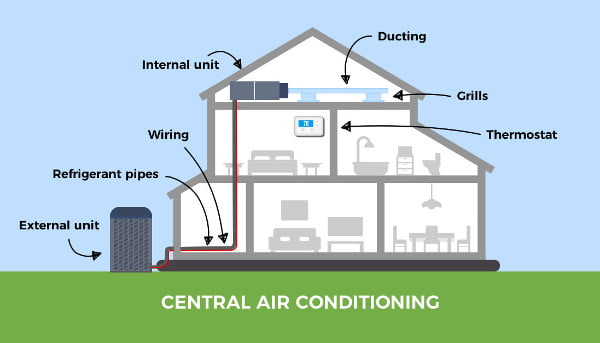
Centralized
air conditioners are those air conditioning equipment that could circulate
cool air through a supply system and return ducts. Registers and supply ducts
carry cooled air from the air conditioner to the home. This cool air gets
heated by circulating across the entire set up and then enters back the air
conditioner through return ducts. Air conditioners also help to dehumidify the
incoming air. A good practice is to use the circulating fans in individual
rooms rather than making use of the system’s central fan for providing air
circulation.
Air
conditioner types:
Normally,
a central air conditioner could be either a split or a packaged one. In case of
a split-system central air conditioner, an outdoor metal cabinet contains the
compressor and condenser. Also, there will be an indoor cabinet containing the
evaporator. This equipment is primarily used for high utility commercial
purposes and for cooling extremely large spaces. On the other hand, in a
packaged central air conditioner, all the essential components such as the
condenser, evaporator and compressor are all located in a single cabinet placed
on a concrete slab or roof. This system is mainly used for residential and
small commercial buildings.
Choosing
the perfect central air conditioner:
Central
air conditioners are extremely efficient compared to the conventional room air
conditioners. They are very quiet, does not occupy house space and very easy to
operate as well. Therefore, it is highly recommended to buy a central air
conditioner that is energy efficient for saving your hard-earned money. The
efficiency of any air conditioners depends upon the installation procedure and
proper size of the unit. The buyers must always choose a high-efficiency
central air conditioner model. It is also vital to choose a model with a higher
SEER (Seasonal Energy Efficiency Ratio), which implies that the air conditioner
will provide more cooling output with lower energy input.
Installation
tips:
Once
the centralized air conditioner is fixed properly, it will definitely work
hassle-free for several years. Using the duct-sizing methodology, providing enough
supply registers, offering sufficient indoor space for maintenance and repair,
sealing all ducts with duct mastic, keeping away the thermostat from other heat
sources, installing ductwork within the conditioned space, periodically
refilling the refrigerant and properly placing the condensing unit in a
confined space to avoid unnecessary noise disturbances are a few of the best
practices to be employed during the AC installation.
Comments
Post a Comment